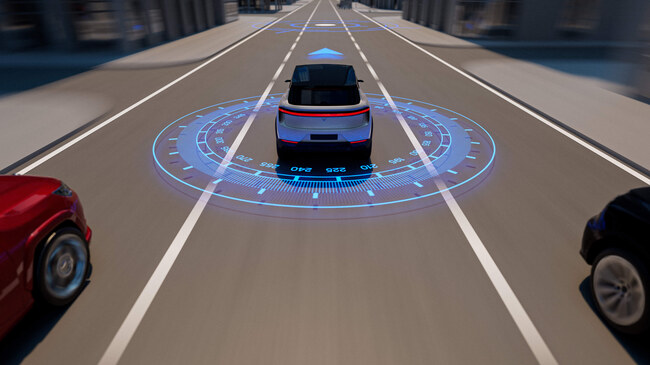5 reasons to partner on ADAS development
Ramya Sriram
5 min read
15th Dec, 2023
Automotive

As automotive manufacturers seek to perfect the hands-free driving experience, industry collaborations are speeding time to market for Advanced Driver Assistance Systems. Manuel Del Castillo, GNSS expert provides some insights to this important topic.
The race to the hands-free future is on. The Advanced Driver Assistance Systems (ADAS) market is growing at a CAGR of 18.7% and is expected to top $90bn worldwide by 2030.
For automakers and Tier 1 suppliers engaged in the ADAS race, R&D strategy must strike an optimal balance between safety, innovation and speed to market. That means making crucial decisions around whether to innovate internally or partner with external specialists.
Collaboration is emerging as the preferred strategy, with recent partnerships seeing Volvo and Renault working with Waymo, and LG Electronics with Qualcomm.
Having received strategic investment from GM Ventures and collaborating with General Motors on integration of next generation GPS technologies we can see five important benefits to industry collaboration around ADAS development:
1. Maintain pace of innovation: With every automaker working on ADAS solutions, R&D partnerships can help OEMs and Tier 1s innovate early and stay ahead of the digital transformation curve. Qualcomm’s recently-announced ADAS innovation partnerships with Amazon Web Services, and with OEMs including BMW, Mercedes-Benz, Jaguar Land Rover and Mahindra, are a case in point.
2. Harness specialist expertise: In a booming sector, hiring, retaining and managing top engineering talent across the whole ADAS stack can be tough, requiring them to refresh their operating model, build tech talent and change their organisational behaviour. With the Institute for the Motor Industry (IMI) predicting a shortfall of 6,000 ADAS-certified technicians by 2030 in the UK alone, partnering with specialist developers can provide access to top talent without the long hiring timescales.
3. Deliver premium features: ADAS is a key brand differentiator for OEMs like Porsche, whose recent tie-up with ADAS developer Mobileye will bring ‘modern, sporty luxury’ to high-end customers. As the hands-free experience comes to the fore, partnerships can help OEMs to extend automated driving even into dense urban areas: a challenge our S-GNSS Auto software is designed to solve.
4. Optimise development budgets and resources: Going at it alone means investing huge amounts of capital, time and talent into R&D that may duplicate work being done—and done more efficiently—elsewhere. Partnering with specialists not only helps get innovations to market faster, but also enables economies of scale and lightens the load of R&D costs. Our S-GNSS Auto software is one such example of a differentiating feature that can catalyse partnerships and accelerate development of new solutions, effectively extending ADAS in suburban and urban environments.
5. Enhance hands-free safety: Safety is a critical aspect of the hands-free driving experience and driven by government regulations mandating the use of advanced safety features. Expected to reduce accidents by about 15% by 2030, they are also expected to enhance the overall driver experience. Features include intelligent deceleration and braking, high-accuracy lane-level positioning (a critical component of ADAS) and protection against RF cyberattacks. Some of these challenges are easier to solve for open roads, because issues like multipath or distortions in mountain roads under foliage are not present. Partnering with specialist solution developers can help to overcome these technical hurdles, as well as help to align to regulation sooner and support the advancement of such safety functionality.
A software partner to tackle ADAS positioning challenges
Focal Point Positioning was founded to address critical issues around GPS/GNSS accuracy, reliability and integrity in dense urban areas or under foliage. Our software product, S-GNSS Auto, is a cost-effective GNSS upgradeable solution to absolute positioning challenges in ADAS systems.
To learn more, visit our S-GNSS product page or get in touch.







